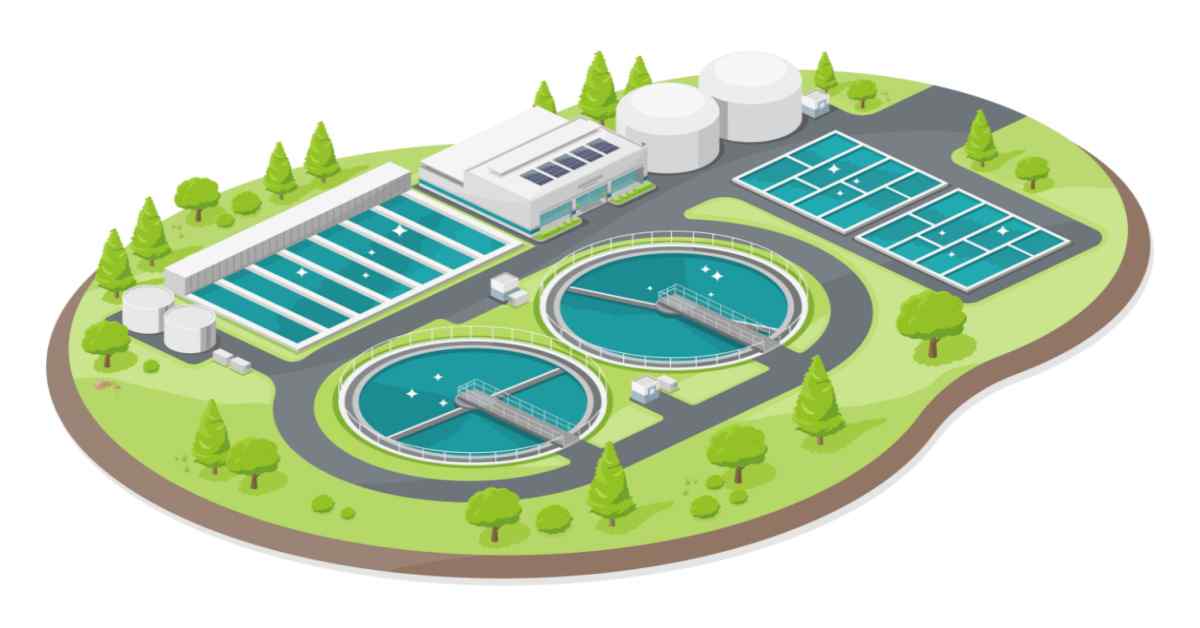Recognizing Wastewater Treatment Processes and Their Ecological Impact
The complexities of wastewater treatment processes play an essential function in mitigating environmental difficulties associated with water pollution. Each stage, from preliminary to sophisticated treatments, is made to resolve specific contaminants, ultimately safeguarding both public health and water environments. However, in spite of technical advancements in treatment effectiveness, significant obstacles linger, including the monitoring of recurring contaminants and the ramifications of nutrient overflow. As we explore the complexities of these processes, it ends up being important to doubt exactly how far current approaches can advance to fulfill the expanding needs of sustainability and ecological preservation.
Summary of Wastewater Therapy
Exactly how is wastewater changed right into a risk-free source for the environment? Wastewater treatment is a vital procedure developed to remove impurities from utilized water, consequently protecting public wellness and protecting ecosystems. This procedure starts with the collection of wastewater from household, commercial, and business sources, which is then directed to treatment centers.
At these centers, various physical, chemical, and organic techniques are utilized to treat the wastewater. Consequently, biological therapies, such as turned on sludge processes, use microbes to damage down organic matter.
The treated effluent can be safely released right into natural water bodies or recycled for watering and commercial objectives, promoting resource preservation. Furthermore, the therapy procedure produces biosolids, which can be repurposed as fertilizers or soil changes, further improving sustainability.
Stages of Treatment Procedures
The wastewater therapy procedure normally includes 3 main stages: preliminary, main, and secondary therapy. Each stage serves an unique function in lowering the pollutant lots and ensuring the effluent meets environmental requirements prior to discharge.

The main treatment stage focuses on the physical splitting up of put on hold solids from the wastewater. With sedimentation, heavier fragments resolve at the base of sedimentation tanks, creating sludge, while lighter products, such as oils and oils, float to the surface area and are skimmed. This procedure substantially decreases the organic and not natural tons in the wastewater.
Second treatment is an organic process intended at further reducing the concentration of organic matter. This stage is vital for attaining the needed biochemical oxygen demand (FIGURE) reduction, inevitably leading to cleaner effluent ready for discharge or further therapy.

Advanced Therapy Technologies
Adhering to the second therapy procedures, advanced treatment innovations play a crucial duty in further enhancing the top quality of dealt with wastewater. These innovations are designed to get rid of residual contaminants that are not properly eliminated throughout main and secondary therapies, making sure the effluent meets rigorous regulatory standards.
Among the commonly made use of advanced therapy methods are membrane filtration, reverse osmosis, and advanced oxidation processes. Membrane filtration, consisting of microfiltration and ultrafiltration, works in dividing fine bits, virus, and colloids from the water (Wastewater). Reverse osmosis utilizes semi-permeable membranes to get rid of liquified solids, resulting in high-grade water ideal for numerous applications
Advanced oxidation procedures (AOPs) utilize solid oxidants to weaken natural toxins, including pharmaceuticals and get redirected here personal treatment items that are resistant to traditional therapy. These techniques enhance the biodegradability of complex substances, facilitating their elimination.
An additional substantial modern technology is using biological nutrient elimination processes, which particularly target nitrogen and phosphorus, avoiding eutrophication in obtaining water bodies. Generally, sophisticated treatment technologies are important for achieving higher degrees of filtration, advertising water reuse, and safeguarding public health and wellness while addressing the difficulties related to wastewater management.
Ecological Benefits of Treatment
Numerous ecological benefits occur from effective wastewater therapy procedures that contribute to ecosystem health and wellness and sustainability. Mostly, these procedures significantly lower the launch of damaging pollutants right into all-natural water bodies, which helps keep water ecological communities. By eliminating impurities such as heavy steels, nutrients, and virus, treated wastewater reduces the risk of waterborne diseases and advertises biodiversity in marine atmospheres.
In addition, wastewater therapy facilities frequently employ advanced modern technologies that make it possible for water recycling and reuse. This method not only preserves freshwater sources but also reduces the need on natural water materials. Improved nutrient elimination from wastewater can also protect against eutrophication, a procedure that brings about algal blooms and subsequent oxygen exhaustion in marine systems.
In addition, effective therapy processes can minimize greenhouse gas exhausts, specifically methane and nitrous oxide, which are often released during unattended wastewater disintegration. By recording and making use of biogas from anaerobic digesters, facilities can convert waste into renewable resource, consequently adding to a decrease in nonrenewable fuel source reliance.
Obstacles and Future Trends
While the environmental advantages of wastewater therapy are clear, several challenges continue that prevent optimal results in this area. One significant concern is aging facilities, which usually leads to ineffectiveness look at this website and boosted functional prices - Wastewater. Many treatment plants were developed decades back, and their abilities do not straighten with modern-day needs, which include stricter governing standards and higher volumes of wastewater due to urbanization

Looking in advance, there is a growing emphasis on source healing and circular economic situation concepts within wastewater treatment. Technologies such as anaerobic food digestion, which can produce biogas, and progressed filtering modern technologies are getting traction. These approaches not only enhance therapy efficiency yet also advertise sustainability.
Ultimately, addressing these difficulties requires partnership among stakeholders, financial investment in modern technology, and a commitment to ongoing research study. By embracing these fads, the wastewater treatment market can evolve to fulfill the demands of an altering setting and society.
Verdict
In verdict, wastewater therapy procedures play a vital role in enhancing environmental high quality and public health. The multi-stage treatment framework, coupled with advanced innovations, effectively reduces contamination and promotes sustainable water management.